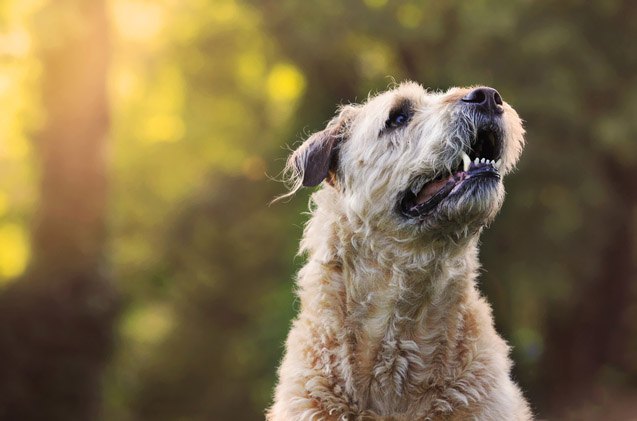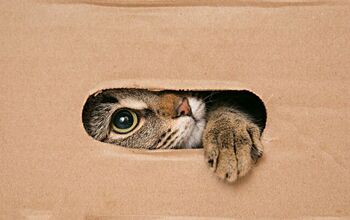Mastidoodle


About Mastidoodle
The easygoing Mastidoodle is a fun-loving mix of the loyal, intelligent Standard Poodle and the gentle giant Mastiff. His love of kids and other animals makes him a great family pet who wants nothing more than to hang out with his human pack. A great walking or running companion, this big boy is obedient and well-mannered – an ideal pooch for those who love a big dog.
The Mastidoodle brings together the loyal Poodle and the gentle Mastiff for an easygoing family dog.
The Mastidoodle is considered a Designer Dog and was likely introduced back in the 1980’s when this practice first began. These dogs are the result of mixing and matching different pure-breeds to produce puppies that carried the desired traits of both parent breeds – typically a healthier, smaller, hypo-allergenic or gentler form of a popular breed.
The Mastidoodle comes from two different purebred dogs and as a result, isn’t eligible to join the American Kennel Club (AKC). However, both parent breeds are long-time members; the Mastiff joined the AKC’s “working” group back in 1885 followed shortly after by the Poodle who joined the AKCs “non-sporting” group in 1887.
The Mastidoodle is a large, somewhat active dog who will need a nutrient-rich kibble specifically formulated for a dog of his age, size and activity level. Because he has a tendency to become obese, always choose a food that is low in fillers (carbs) that may cause him to over-eat to feel full. The Poodle side of this dog means he may experience digestive issues including bloat so look for a low-fat food and plan to schedule 2 to 3 feedings per day versus allowing him to free-feed.
The sweet-natured Mastidoodle gets along well with kids and other animals.
Your Mastidoodle comes from two intelligent breeds that make him quick to pick up commands and fairly easy to train. However, this pooch does become bored and distracted easily so patience will be needed along with interesting incentives to keep him engaged and learning. As with most breeds, a firm consistent approach that is rewards-based will net you the results you are looking for.
When fully grown, the Mastisdoodle’s weight will reflect whichever of his parent breeds is more prominent. As a result, he could weigh as little as 55 pounds or as much as 100 pounds if he leans more toward the Mastiff.
The Mastidoodle is a sweet-natured, gentle giant of a dog that once socialized gets along well with kids, other animals and new faces. This smart boy can become easily bored and distracted making him a handful to train and destructive when left on his own for long periods. A family where a member works from home, puzzle toys and interactive playtime can help alleviate this. His protective nature makes him quick to bark to warn owners of a stranger turning him into an ideal non-aggressive watchdog.
Designer dogs have typically been bred to eliminate many of the health issues that can plague their pure-bred parents. While the Mastidoodle is a healthy dog, it’s important to know what your new pup could inherit and in this instance, he can be prone to digestive and joint issues from the Poodle as well as a kidney disease called Addison’s, epilepsy and seizures.
Your Mastidoodle is a relatively healthy dog that will typically live between 9 and 12 years which is typical for most large dogs.
The Mastidoodle comes from two large athletic dogs and while he isn’t considered high-energy, he will need long daily walks or runs to keep him fit and healthy. Because this dog can become bored and restless, mental stimulation is important and mixing up his walking regimen with interactive backyard playtime and dog parks can be just the ticket.
Your Mastidoodle comes from two intelligent breeds that make him quick to pick up commands and fairly easy to train.
Also known as the Mastipoo, Mastiffpoo and Mastiffdoodle, the Mastidoodle is not recognized by the American Kennel Club (AKC) however he is a member of the Designer Breed Registry (DBR and the International Designer Canine Registry (IDCR).
The Mastidoodle will typically have the shorter, denser and curly coat of the Poodle which means he will be a low- to moderate-shedder and require moderate maintenance including brushing 1 to 2 times per week to keep his coat looking its best. Because of his Poodle DNA, his curly and often corded coat will require regular trips to the groomers and as a floppy eared dog he will be prone to ear infections, so owners should plan to inspect and clean his ears weekly.
The cute little Mastidoodle puppy will quickly grow into a large pooch that can be a handful if he hasn’t been properly socialized. Start training this pup while he is still young, ensure he is comfortable with new faces and other animals and that he understands you are his pack leader. Because he may be prone to joint issues later in life, leash training and exercise should be careful to not over-tax tiny limbs.
Photo credit: Nick Chase 68/Shutterstock; Ysbrand Cosijn/Shutterstock

Sharing space with three seriously judgy Schnoodles and a feline who prefers to be left alone. #LivingMyBestLife
More by Mary Simpson
























